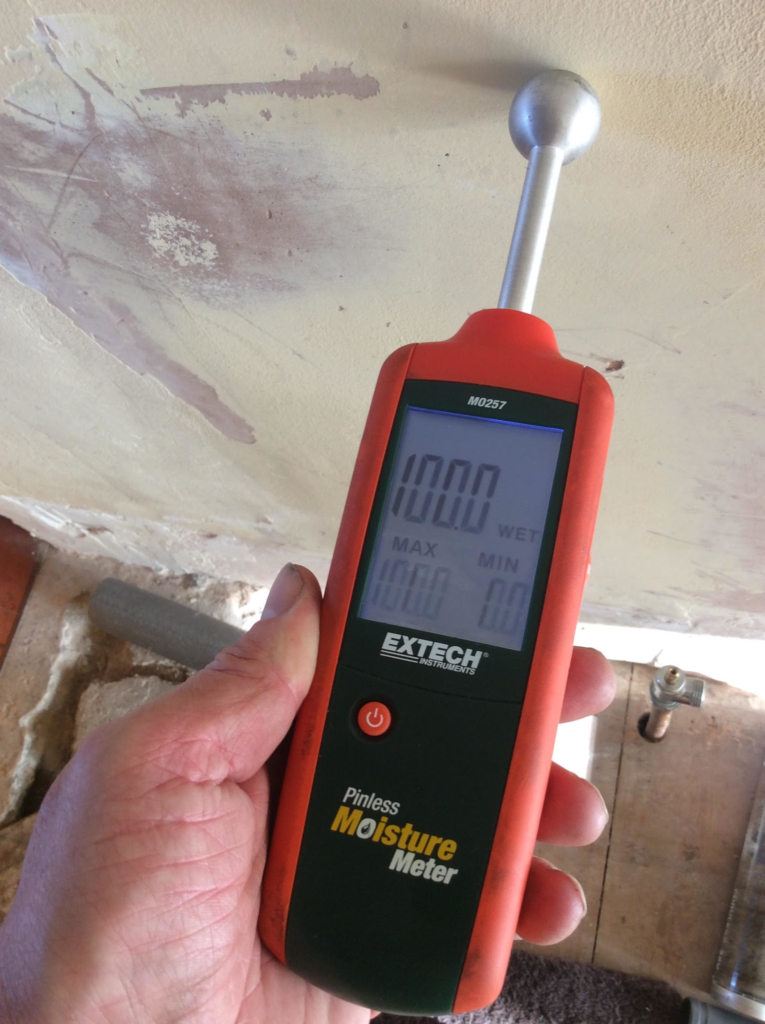Internal Water Leak Detection
 We tend to take it for granted that water will come out of the tap and that this water will be safe to drink or “potable” as a technical term, rarely do we consider the ramifications of that supply should it stop working or suffer a burst pipe.
We tend to take it for granted that water will come out of the tap and that this water will be safe to drink or “potable” as a technical term, rarely do we consider the ramifications of that supply should it stop working or suffer a burst pipe.
Having a water leak is a real pain, there is very little you can do to maintain pipework to prevent leaks internally; however internal water leaks are the cause of 90% of insurance water damage claims and very few are burst pipes. Most are small leaks that slowly cause huge amounts of damage if left unnoticed.
Most pipework is buried under the floor in the concrete screed or the cavity and cannot be maintained…so what can be done to minimise leaks internally?
- When making additions, make sure that any internal installation is done competently and that copper pipework in concrete is lagged to protect it from the corrosive lime in concrete, and that plastic pipe is supported, particularly at joints, particularly where plastic pipework is in a cavity floor.
- Do not ignore pipework in poor condition! It is likely holding as much pressure as is in a car tyre and even the smallest of internal leaks will over time cause a huge amount of damage and in particular saturation of the sub-flooring.
- Know where your stop cocks and isolators are and make sure they work. Often customers do not know how to turn the water off in an emergency, or the stop cock is jammed and does not work.
- Similarly, know where the external isolator is and that it works. If you have a water meter, you can also detect even small water leaks as these are indicated by the small wheel in the middle, and every digit in the red section is 1 litre.
- Act quickly! When you realise you have a leak, please turn off the water before you try to tackle it and remember there is a good bucket full held in the pipework.
- Where you cannot see the leak, call a leak detection specialist.

